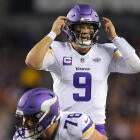Agent's Take: The top 10 NFL contracts from players' side of the negotiating table
Tavon Austin, Matt Kalil and Joe Flacco headline our list of the NFL's most player-friendly deals
What are the best and worst contracts in the NFL? That's a matter of perspective. Most of the time, an evaluation of contracts is from the viewpoint of teams. As a former agent, my outlook is instinctively the opposite.
So what are the 10 best NFL contracts from the player's perspective? I've compiled the list. Several factors were taken into account when assessing contracts. The lack of fully-guaranteed contracts in the NFL increases the importance of how a deal is structured. Consequently, overall contract value and the average salary aren't as significant as the compensation in the first three years of a multi-year deal and the amount of guaranteed money, particularly at signing or vesting early.
The three-year total is useful in determining whether a contract is front-loaded or back-loaded. Back-loaded contracts are considered as team-friendly deals. Since salary guarantees are becoming as customary as signing bonuses in NFL contracts, the existence of offset language in salary guarantees is also a factor in valuing contracts. An offset clause reduces the guaranteed money a team owes a player when he is released by the amount of his new deal with another team. Without an offset, the player receives his salary from the team that released him as well as the full salary from his new contract with another club -- also known as "double dipping."
It is expected that contracts will be surpassed after they are negotiated. The best deals do not quickly become obsolete or will hold up over time. The circumstances when a contract was negotiated have also been given weight in these rankings to provide context.
The contract: $42,222,004 million extension over four years
The Rams picking up Austin's $12.268 million fifth-year option for 2017 was hard to justify because his production hadn't warranted it. Austin was coming off a 2015 season with career bests of 52 receptions, 473 receiving yards and five touchdown catches when the option was exercised. He also rushed for a career-high 434 yards on 52 attempts (8.3 yards per carry) and added another 284 yards returning kicks in 2015.
The Rams inexplicably doubled down on their faith in Austin by giving him a head-scratching four-year contract extension during the 2016 preseason that averages approximately $10.5 million per year with $28.5 million of guarantees. This, despite him underachieving in his first three NFL seasons. The deal could easily be worth a lot more because of $14 million of incentives and base salary escalators, which wouldn't be too hard to achieve with Austin producing like a good wide receiver.
Austin earns $250,000 each time he has 1,000 combined receiving and rushing yards in a season. Every 125 combined yards up to 1,375 is worth an extra $250,000, except the highest threshold also requires at least nine wins by the Rams or a playoff berth. The amount earned is added to the following year's base salary as well. If Austin's performance remotely matched his contract, making a minimum of $1 million annually under these clauses would be a realistic possibility. There are also annual incentives for touchdowns between $250,000 and $500,000 with 10 scores as the highest threshold.
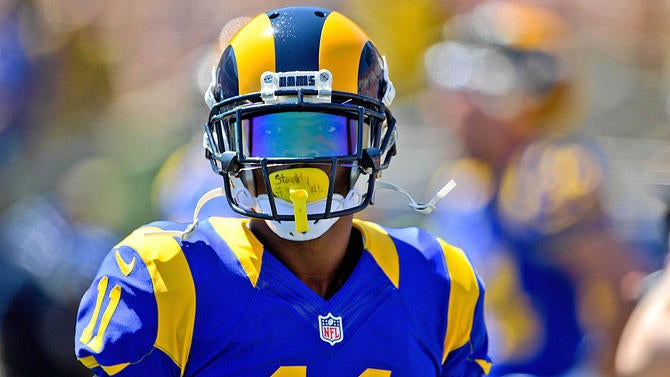
Austin didn't earn any of his performance bonuses last season. He barely topped the 500-yard receiving mark in 2016 for the first time during his NFL career.
Had the Rams passed on Austin's fifth-year option, which would have been justifiable, he would have become an unrestricted free agent after the 2016 season. Austin could have been re-signed for pennies on the dollar since it's highly unlikely a strong free agent market would have developed for a poor man's Percy Harvin.
The Rams can pull the plug on Austin next offseason with just a $5 million salary cap charge from his 2018 fifth day of the league year roster bonus due on March 18, which is already fully guaranteed, because he didn't get a signing bonus with his new deal. Since Austin's rookie contract was running through the 2017 season, the Rams will have essentially given him an extra $11.1 million without him playing under any of the extension years if released in 2018.
The contract: $55.5 million over five years
The Panthers raised a lot of eyebrows by signing Kalil to five-year, $55.5 million contract with $25 million of guarantees after he missed most of the 2016 season with a hip problem and had regressed since being named a Pro Bowl alternate as a rookie in 2012 with the Vikings.
Conventional wisdom suggested a one-year prove-it deal because of the injury and downward career trajectory. Luke Joeckel, the second overall pick in the 2013 draft, who was a disappointment at left tackle with the Jaguars, got a one-year, $8 million deal from the Seahawks this offseason. Like Kalil, Joeckel missed most of the 2016 season due to injury. His was a left knee injury requiring reconstructive surgery.
Kalil's contract contains the same signing and option bonus structure as in Cam Newton and Luke Kuechly's contracts. An option bonus is essentially an additional signing bonus that's usually paid in the second or third year of a contract to exercise later years in the deal. Since an option bonus is given the same treatment on the salary cap as signing bonus, it is prorated or evenly spread out over the life of a contract for a maximum of five years.
The Panthers have a five day window from the first to fifth days of the 2018 league year (March 14 through March 18) to exercise the option on Kalil's 2021 contract year, which requires a $10 million payment, in order to reduce his fully guaranteed $11 million 2018 base salary to $1 million. If the Panthers pass on Kalil's 2021 contract year, he will still be owed the $10 million with the same 2018 base salary reduction, provided he is on their roster on March 19, the sixth day of the league year. The 2018 salary guarantee ensures that Kalil will see at least the first three years of the deal in which he makes $33 million, no matter how he plays, because it will be too cost prohibitive to release him prior to the 2020 season.
The contract: $66.4 million extension over three years
Flacco's 2016 extension is a byproduct of his six-year, $120.6 million contract with $52 million in guarantees after capitalizing on an outstanding 2012 playoffs (1,140 passing yards, 11 touchdown passes and zero interceptions in four games) in which he led the Ravens to a Super Bowl XLVII victory. The deal briefly made Flacco the NFL's highest-paid player with a $20.1 million average per year until Aaron Rodgers ($22 million average per year) eclipsed him less than two months later.
Flacco hasn't come close to duplicating his stellar play in the four seasons since being named Super Bowl MVP. He's been a slightly above average quarterback at best and the Ravens have only been to the playoffs once.
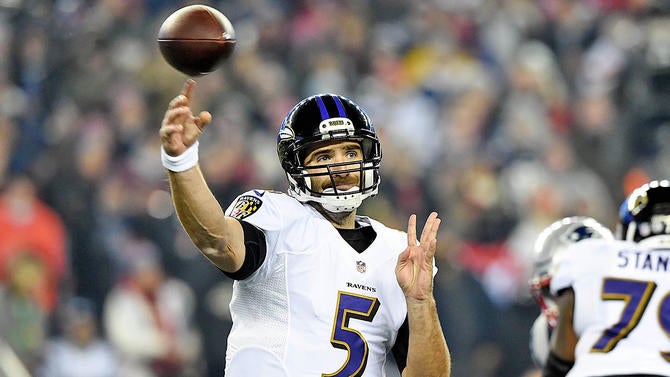
Flacco was able to take advantage of Baltimore's need to lower his unwieldy $28.55 million 2016 cap number because of a tight cap situation for a second short stint as the NFL's highest-paid player with an average of $22,133,333 per year. Colts quarterback Andrew Luck subsequently changed the NFL salary landscape a couple of months later when he signed a five-year, $122.97 million contract extension. Flacco's extension contained an NFL record $40 million signing bonus.
Flacco's 2013 deal, which includes a massive amount of bonus proration thanks to being structured with a signing bonus and two option bonuses, makes it difficult for the Ravens to get rid of him before 2019. Although Flacco has the NFL's fourth-highest cap number in 2018 at $24.75 million, the Ravens would have a $28.75 million cap charge instead by trading or cutting him next year. That is unless the transaction is made after June 1 so the $16 million of bonus proration from his 2019 and 2020 contract years wouldn't hit Baltimore's books in 2018.
The contract: $21 million over four years
Juszczyk's deal averages over twice as much as the NFL's second-most lucrative fullback contract. It was inconceivable that Juszczyk could land a deal making him the NFL's sixth highest-paid veteran running back on a multi-year contract when free agency started. 49ers general manager John Lynch described Juszczyk as a versatile offensive weapon when he was signed. He'll need to provide a lot more than the 39 receptions and almost 300 receiving yards he averaged over the last two seasons with the Ravens and be on the field more than the 40.8 percent he played offensively in 2016, which led all NFL fullbacks, for the 49ers to get their money's worth.
The contract: $114.375 million over six years
Suh easily became the NFL's highest paid non-quarterback with the jaw-dropping contract he signed as a free agent in 2015. The previous benchmark was the six-year, $100 million extension (averages $16,666,667 per year) that J.J. Watt received from the Texans right before the start of the 2014 regular season. Von Miller overtook Suh as the league's highest paid non-quarterback last July when the Broncos gave him a six-year, $114.5 million contract after designating him as a franchise player.
Suh's $59.955 million fully guaranteed at signing is significantly more than any other NFL player. The next closest is Luck with $47 million fully guaranteed at signing.
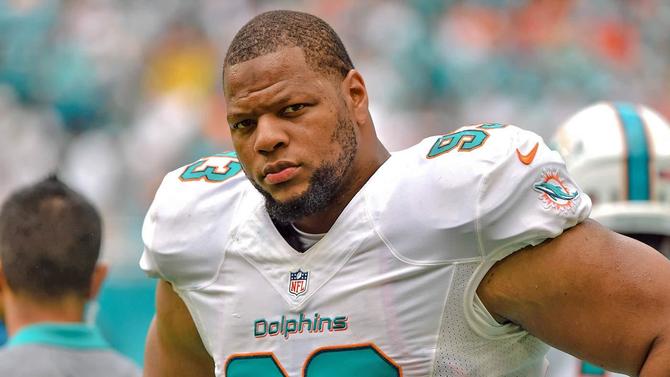
Suh was assured of making the $60 million is in the first three years because of the guarantee before the Dolphins restructured his contract, reducing his $28.6 million 2016 cap number to $12.6 million. This makes it more difficult for Miami to part ways with Suh after the season despite him having the league's biggest 2018 cap number at $26.1 million.
The contract: $38 million over five years
Clay has the NFL's most front-loaded five year contract thanks to signing an offer sheet with the Bills designed to prevent the Dolphins from matching after being designated as a transition player in 2015. A total $24.5 million of Clay's compensation (64.5 percent) is in the first two years of the deal. Clay's $29 million in the first three contract years rivals the $30 million in Jimmy Graham's four-year, $40 million contract, which makes him the NFL's only $10 million per year tight end. A total of 76.3 percent of Clay's money is in the first three years. Clay's $23 million fully guaranteed at signing leads the way for tight ends and dwarfs Graham's $13 million. His $24.5 million of overall guarantees is also tops for tight ends.
The contract: $95.1 million extension over six years
The 2015 extension that the Bills gave Dareus made him the NFL's second highest-paid NFL defensive lineman behind Suh. The deal was worth a maximum of $100.35 million because of salary escalators based on the number of times Dareus earned first team All-Pro honors.
Dareus' $60 million in overall guarantees were a record for a defensive player. His $42.9 million fully guaranteed at signing was on par with the top quarterback contracts. It's also $900,000 more than Von Miller had fully guaranteed at signing. $53.15 million was in the first three years prior to factoring in Dareus' suspensions for off-field transgressions.
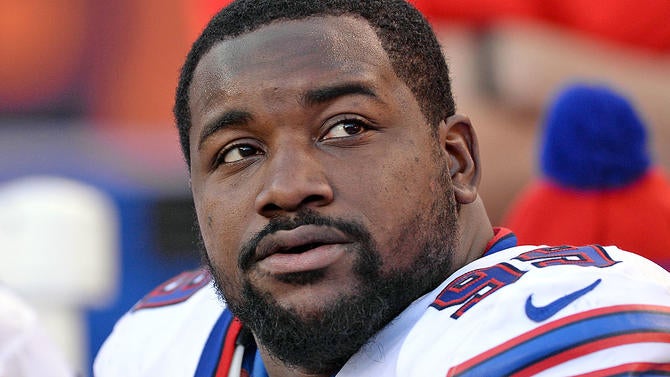
Most NFL contracts contain language that void remaining salary guarantees with any type of suspension. Derek Carr and Miller, the NFL's highest-paid player and non-quarterback, have this type of language in their contracts. The guarantees in Buffalo contracts don't void with suspensions for performance-enhancing drugs or substance abuse violations. Dareus' drug charges for possession of synthetic marijuana over a year before signing the extension should have been a red flag for the Bills to insist on such language. Because Buffalo didn't, $25 million in 2016 through 2018 base salary guarantees remained intact when Dareus was suspended for the first four games of the 2016 regular season for violating the NFL's substance abuse policy.
The contract: $58.5 million over five years
Osemele's 2016 free-agent contract was the catalyst for the explosion in offensive guard salaries. He got what was great left tackle money at the time when the top guard deal signed in the last couple of years prior to his was the five-year, $40 million contract, which included $22.5 million in guarantees, Mike Iupati received from the Cardinals as a free agent in 2015. Osemele set a new standard for guards with $25.4 million fully guaranteed at signing. His contract also contains $300,000 annual incentive for making the Pro Bowl to push the maximum value to $60 million.
Six other guards (Kevin Zeitler, Trai Turner, Gabe Jackson, David DeCastro, Kyle Long and Joel Bitonio) have hit or cracked the $10 million per year mark since Osemele first went past the barrier. Most notably, Zeitler surpassed Osemele in free agency this offseason. He signed a five-year, $60 million deal containing $31.5 million in guarantees with the Browns.
The contract: $75 Million over five years
Norman raised the salary bar for cornerbacks a couple of days after the Panthers rescinded the franchise player designation placed on him when the Redskins made him the NFL's highest-paid cover man leading up to the 2016 NFL draft. His contract, which contains a cornerback record $50 million in guarantees, is extremely front-loaded. $51 million, which represents 68 percent of Norman's contract, is in the first three years. $36.5 million was fully guaranteed at signing.
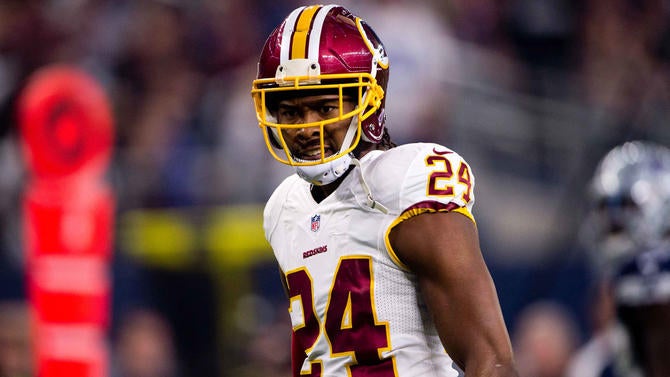
By contrast, Patrick Peterson and Richard Sherman, who are the league's third and fourth highest-paid cornerbacks respectively, had $30.481 million fully guaranteed at signing collectively in the extensions they received in 2014. The high-end cornerback deals signed after Norman's (A.J. Bouye, Stephon Gilmore, Xavier Rhodes and Desmond Trufant), are inferior to his both structurally and financially.
The contract: $18 million over three years
Sims fundamentally changed the market for tight ends known more for blocking than pass catching. His deal contains $10 million of guarantees. It's hard to reconcile Sims' contract with the deal Martellus Bennett, who was clearly the best free agent available at the position, got from the Packers. Comparatively, Bennett's three-year, $21 million deal is a tremendous value for Green Bay. Only $6.3 million is guaranteed. Before Sims' deal, $3 million per year was considered a steep price for a blocking tight end. For example, Lee Smith received a three-year, $9.1 million deal with $3.2 million in guarantees from the Raiders in 2015.
































